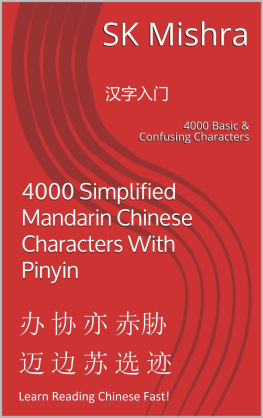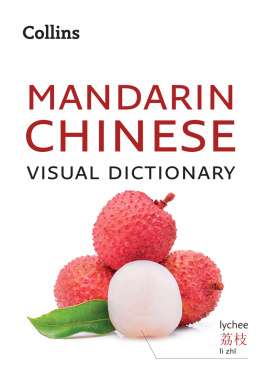Focus Manifestation in Mandarin Chinese and Cantonese
One prominent function of natural language is to convey information. One peculiarity is that it does not do so randomly but in a structured way, with information structuring formally recognized to be a component of grammar. Among all information structuring notions, focus is one primitive needed to account for all phenomena.
Focus Manifestation in Mandarin Chinese and Cantonese: A Comparative Perspective aims to examine from a semantic perspective how syntactic structures and focus adverbs in Mandarin Chinese and semantic particles in Cantonese conspire to encode focus structures and determine focus manifestation in Chinese. With both being tonal languages, Mandarin Chinese and Cantonese manifest different morpho-syntactic configurations to mark focus. A general principle governing focus marking in Mandarin Chinese and Cantonese is given in the book, which aims to give a better understanding of the underlying principles the two use to mark additive and restrictive meanings, and related focus interpretations. Particular attention is also drawn to the co-occurrence of multiple forms of restrictive and additive particles in Cantonese, including adverbs, verbal suffixes, and sentence-final particles. Linearity has been shown to be an important parameter to determine how focus is structured in Cantonese.
This book is aimed at advanced graduate students, researchers, and scholars working on Chinese linguistics, syntax and semantics, and comparative dialectal grammar.
Peppina Po-lun Lee is Associate Professor in the Department of Linguistics and Translation at City University of Hong Kong. She has published more than 40 research papers in refereed journals and edited books. Her major publications have appeared in Lingua, Linguistics, Journal of Pragmatics, and Language and Linguistics, as well as ZhongguoYuwen (Studies of the Chinese Language) and Dangdai Yuyanxue (Contemporary Linguistics). Specializing in theoretical linguistics, her research interests cover semantics, syntax-semantics interface, and Chinese and Cantonese linguistics. She has worked on a variety of research topics, including focus and information structure, negation, eventuality, quantification, and particles.
Routledge Studies in Chinese Linguistics
Series Editor: Hongming Zhang
Dimensions of Variation in Written Chinese
Zheng-Sheng Zhang
The Semantics of Chinese Classifiers and Linguistic Relativity
Song Jiang
Mandarin Chinese Words and Parts of Speech
A Corpus-Based Study
Chu-Ren Huang, Shu-Kai Hsieh, Keh-Jiann Chen
A Study of Sino-Korean Phonology
Its Origin, Adaptation and Layers
Youyong Qian
Partition and Quantity
Numerical Classifiers, Measurement and Partitive Constructions in Mandarin Chinese
Jing Jin
Mandarin Loanwords
Tae Eun Kim
Intensification and Modal Necessity in Mandarin Chinese
Jiun-Shiung Wu
The Architecture of Periphery in Chinese
Cartography and Minimalism
Victor Pan
Focus Manifestation in Mandarin Chinese and Cantonese
A Comparative Perspective
Peppina Po-lun Lee
For more information about this series, please visit: www.routledge.com/languages/series/RSICL
Focus Manifestation in Mandarin Chinese and Cantonese
A Comparative Perspective
Peppina Po-lun Lee

First published 2019
by Routledge
2 Park Square, Milton Park, Abingdon, Oxon OX14 4RN
and by Routledge
52 Vanderbilt Avenue, New York, NY 10017
Routledge is an imprint of the Taylor & Francis Group, an informa business
2019 Peppina Po-lun Lee
The right of Peppina Po-lun Lee to be identified as author of this work has been asserted by her in accordance with sections 77 and 78 of the Copyright, Designs and Patents Act 1988.
All rights reserved. No part of this book may be reprinted or reproduced or utilised in any form or by any electronic, mechanical, or other means, now known or hereafter invented, including photocopying and recording, or in any information storage or retrieval system, without permission in writing from the publishers.
Trademark notice: Product or corporate names may be trademarks or registered trademarks, and are used only for identification and explanation without intent to infringe.
British Library Cataloguing-in-Publication Data
A catalogue record for this book is available from the British Library
Library of Congress Cataloging-in-Publication Data
Names: Lee, Peppina Po-lun, author.
Title: Focus manifestation in Mandarin Chinese and Cantonese :
a comparative perspective / Peppina Po-lun Lee.
Description: Abingdon, Oxon ; New York, NY : Routledge, 2019. |
Series: Routledge studies in Chinese linguistics |
Includes bibliographical references and index.
Identifiers: LCCN 2018058061 (print) | LCCN 2019001578 (ebook) |
ISBN 9781351339674 (pdf) | ISBN 9781351339650 (mobi) |
ISBN 9781351339667 (epub) | ISBN 9781138568112 |
ISBN 9781138568112q(hardback :qalk. paper) | ISBN 9780203705223q(ebook)
Subjects: LCSH: Mandarin dialectsSyntax. | Cantonese dialectsSyntax.
Classification: LCC PL1893 (ebook) |
LCC PL1893 .L44 2019 (print) | DC 495.15dc 3
LC record available at https://lccn.loc.gov/2018058061
ISBN: 978-1-138-56811-2 (hbk)
ISBN: 978-0-203-70522-3 (ebk)
Typeset in Times New Roman
by Newgen Publishing UK
Contents
My intense interest in the study of focus phenomena grew from my PhD study when I started to examine facts in Chinese. My intention in writing this book was to provide a reliable guide for people who are interested in knowing how syntactic structures and focus particles conspire to encode focus structures and influence focus manifestation in Mandarin Chinese and Cantonese. This book gives more emphasis to Cantonese and focus particles, as Cantonese has given lots of interesting facts, which are unattested in Mandarin Chinese.
Many people have contributed to the field of Cantonese linguistics in different ways and to different degrees. My desire and aspiration to conduct further research on Cantonese grew because of these people. To begin with, I would like to express my deepest gratitude to the group of Cantonese scholars who have been working hard for years to figure out the picture behind Cantonese through generalizing facts at different levels, though I cannot mention all their names here. Sincere and particular thanks go to Cheung Hung-nin and Thomas Hun-tak Lee. Cheung Hung-nin wrote the first comprehensive book on Cantonese from a structural perspective, and Thomas Hun-tak Lee contributes to Cantonese and Chinese linguistics from all perspectives, not limited just to language acquisition but including syntax and semantics as well. Their superb standards of scholarship have inspired every student in this field, including myself.
Moreover, over the years, Cantonese studies have been benefited from comprehensive work on Cantonese grammar, from the early study by Stephen Matthews and Virginia Yip to the recent examination by Tang Sze-wing. Comprehensive research on specific topics has also contributed a lot to the field, including the invaluable studies on sentence-final particles by Helen Kwok, Leung Chung-sum, Law Sam-po, Luke Kang-kwong, and Roxanna Fung, and on Cantonese particles and nominals by Lisa Lai-shen Cheng and Rint Sybesma.













